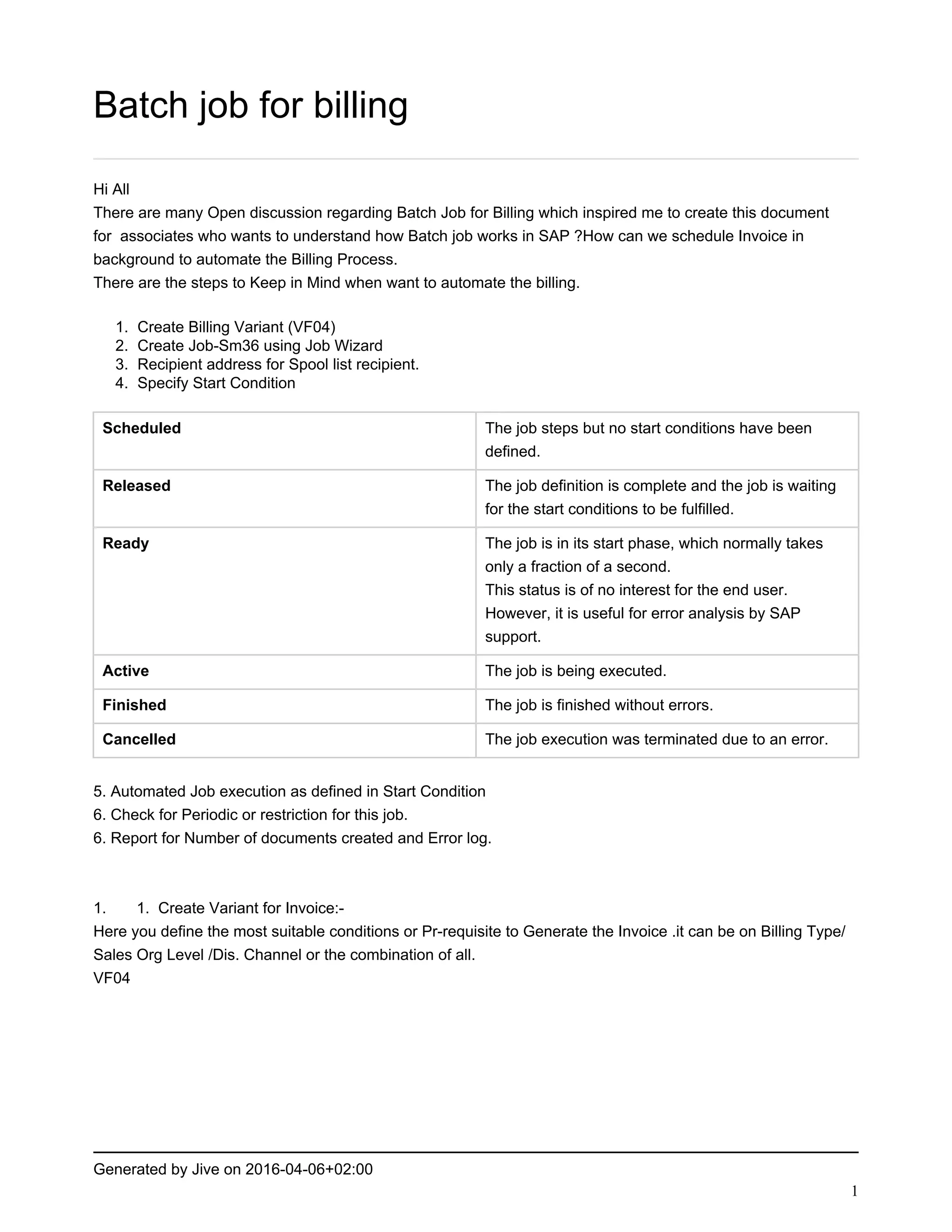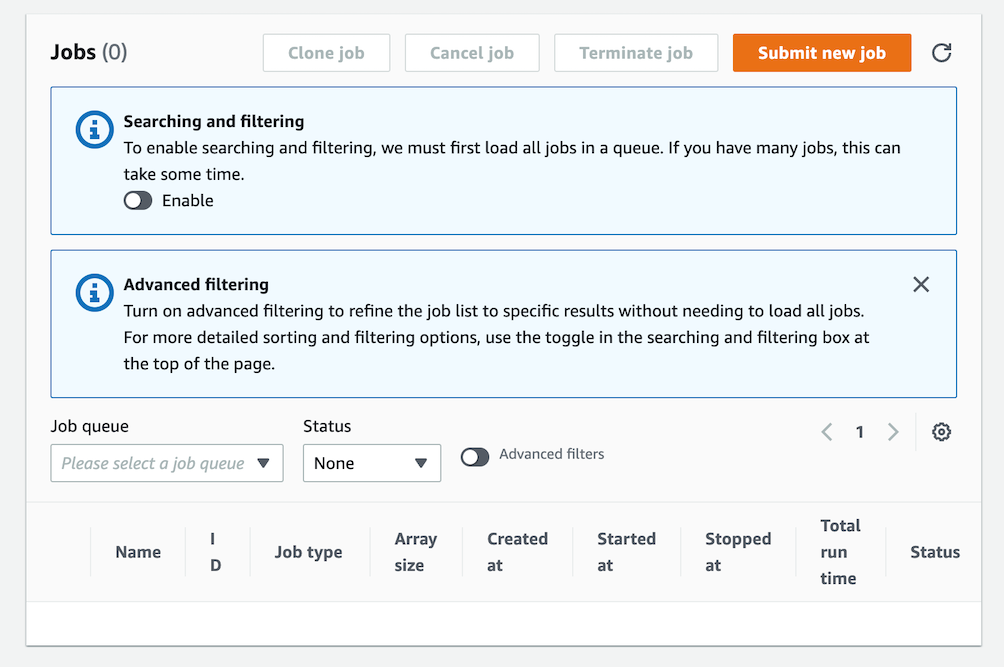Hey there, tech enthusiasts! If you're diving into the world of IoT (Internet of Things) and trying to wrap your head around RemoteIoT batch job examples, you're in the right place. RemoteIoT is more than just a buzzword—it's a game-changer for businesses and developers looking to process massive amounts of data efficiently. Let's break it down and make it super simple for you to understand.
Imagine having a system that can handle thousands of devices sending data every second. Now imagine being able to process all that data in batches without losing any critical info. Sounds awesome, right? That's where RemoteIoT batch job examples come into play. Whether you're a beginner or a seasoned pro, understanding how these systems work can take your IoT projects to the next level.
Before we dive deep into the nitty-gritty, let's set the stage. This guide isn't just another tech jargon-filled article. We're going to walk you through real-world examples, practical tips, and actionable insights. So grab your favorite drink, and let's get started on this RemoteIoT journey!
Understanding RemoteIoT Batch Job Example Basics
What Exactly Is RemoteIoT?
Let's start with the basics. RemoteIoT refers to the infrastructure and tools used to manage, process, and analyze data from remote IoT devices. Think of it as the backbone of any IoT project. Now, when we talk about batch job examples, we're talking about how this system processes large chunks of data in predefined intervals. It's like organizing your emails into folders instead of leaving them scattered everywhere.
RemoteIoT batch jobs are crucial for tasks like data aggregation, analysis, and reporting. They help ensure that your IoT devices don't overload your system with too much data at once. Instead, they send it in manageable chunks, making everything run smoother and more efficiently.
Why RemoteIoT Batch Jobs Matter
Here's the deal: IoT devices generate tons of data, and processing it all in real-time can be overwhelming. That's where batch processing comes in. By scheduling data processing tasks, you can:
- Reduce system load and improve performance.
- Ensure data consistency and accuracy.
- Lower costs by optimizing resource usage.
- Gain deeper insights through comprehensive data analysis.
These benefits make RemoteIoT batch job examples essential for anyone working with IoT technologies. Whether you're managing smart home devices, industrial sensors, or agricultural monitors, batch processing is your secret weapon.
Setting Up Your First RemoteIoT Batch Job
Step-by-Step Guide
Alright, let's get practical. Setting up your first RemoteIoT batch job doesn't have to be rocket science. Follow these simple steps:
- Identify your data sources and the type of data you're working with.
- Choose the right tools and platforms for batch processing. Some popular options include Apache Kafka, AWS Batch, and Google Cloud Dataflow.
- Define your batch processing intervals based on your project's needs. For example, you might choose to process data every hour or every day.
- Write scripts or use pre-built templates to automate the batch job process.
- Test your setup thoroughly to ensure everything runs smoothly.
By following these steps, you'll have a solid foundation for your RemoteIoT batch job. Remember, the key is to keep things simple and scalable.
Tools and Platforms for RemoteIoT Batch Jobs
Now, let's talk tools. There are plenty of platforms out there that make RemoteIoT batch job setup a breeze. Here are a few worth checking out:
- Apache Kafka: Great for handling large-scale data streams.
- AWS Batch: Ideal for cloud-based batch processing tasks.
- Google Cloud Dataflow: Offers powerful data processing capabilities with minimal setup.
- Azure Batch: Perfect for enterprise-level IoT projects.
Each of these tools has its own strengths, so choose the one that best fits your project's requirements.
Real-World RemoteIoT Batch Job Examples
Case Study: Smart Agriculture
Let's take a look at a real-world example: smart agriculture. Imagine a farm equipped with hundreds of IoT sensors monitoring soil moisture, temperature, and humidity. Processing all that data in real-time would be a nightmare. Instead, a RemoteIoT batch job can collect and process the data every few hours, providing farmers with actionable insights to optimize crop yields.
Case Study: Industrial IoT
Another great example is industrial IoT. In a manufacturing plant, sensors monitor machinery performance 24/7. By scheduling batch jobs to analyze this data periodically, engineers can identify potential issues before they become major problems. This proactive approach saves time, money, and resources.
Best Practices for RemoteIoT Batch Job Implementation
Optimizing Batch Job Performance
Here are some tips to help you get the most out of your RemoteIoT batch jobs:
- Monitor System Performance: Keep an eye on your system's performance to ensure batch jobs are running smoothly.
- Scale Resources Dynamically: Adjust resource allocation based on data volume and processing needs.
- Automate Error Handling: Set up alerts and automated responses for common issues.
- Document Everything: Keep detailed records of your batch job setups for future reference.
These best practices will help you avoid common pitfalls and ensure your RemoteIoT batch jobs are as efficient as possible.
Security Considerations
Security is always a top priority when dealing with IoT data. Make sure to:
- Encrypt data in transit and at rest.
- Implement strong authentication and authorization protocols.
- Regularly update and patch your systems to protect against vulnerabilities.
By following these security measures, you'll keep your data safe and your systems secure.
Common Challenges and Solutions
Data Overload
One of the biggest challenges with RemoteIoT batch jobs is data overload. Too much data can overwhelm your system, leading to performance issues. The solution? Use data filtering and aggregation techniques to reduce the volume of data processed in each batch.
System Downtime
System downtime is another common issue. To minimize disruptions, schedule batch jobs during off-peak hours and implement failover systems to ensure continuous operation.
Data Analytics with RemoteIoT Batch Jobs
Unlocking Insights
Data analytics is where RemoteIoT batch jobs really shine. By processing data in batches, you can uncover patterns, trends, and insights that would be impossible to detect in real-time. Whether you're analyzing customer behavior, optimizing supply chains, or improving product performance, batch processing provides the clarity you need to make informed decisions.
Visualization Tools
To make sense of all that data, consider using visualization tools like Tableau, Power BI, or Grafana. These tools help you transform raw data into easy-to-understand charts, graphs, and dashboards, making it simple to communicate findings to stakeholders.
Frequently Asked Questions (FAQ)
What Are the Benefits of RemoteIoT Batch Jobs?
The benefits include improved system performance, reduced costs, enhanced data accuracy, and better resource management. Plus, you gain deeper insights into your IoT data, enabling smarter decision-making.
How Do I Choose the Right Platform for RemoteIoT Batch Jobs?
Consider factors like scalability, ease of use, cost, and integration capabilities. Research each platform's features and read user reviews to find the one that best suits your needs.
Can RemoteIoT Batch Jobs Handle Real-Time Data?
While batch jobs are primarily designed for processing data in predefined intervals, they can complement real-time processing systems. For example, you might use batch jobs for historical data analysis while relying on real-time systems for immediate insights.
Conclusion: Take Your IoT Projects to the Next Level
There you have it—your ultimate guide to RemoteIoT batch job examples. By understanding the basics, setting up your first batch job, exploring real-world examples, and implementing best practices, you're well on your way to mastering this powerful technology.
So, what's next? Take action! Start experimenting with batch jobs in your IoT projects and see the difference they can make. Don't forget to share your experiences and insights in the comments below. And if you found this article helpful, give it a like and share it with your fellow tech enthusiasts. Together, let's build a smarter, more connected world!
Table of Contents
- Understanding RemoteIoT Batch Job Example Basics
- Why RemoteIoT Batch Jobs Matter
- Setting Up Your First RemoteIoT Batch Job
- Tools and Platforms for RemoteIoT Batch Jobs
- Real-World RemoteIoT Batch Job Examples
- Best Practices for RemoteIoT Batch Job Implementation
- Common Challenges and Solutions
- Data Analytics with RemoteIoT Batch Jobs
- Frequently Asked Questions (FAQ)
- Conclusion: Take Your IoT Projects to the Next Level


